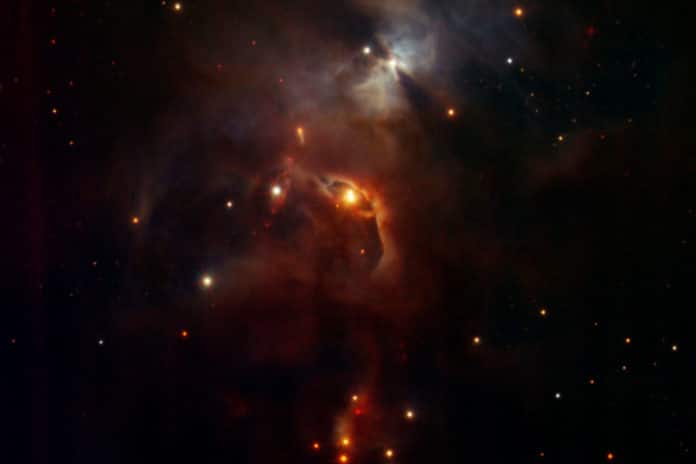Sometimes known as failed stars, Brown dwarfs are hydrogen-rich objects that are unable to sustain core fusion reactions. Due to their mass, they occupy an intermediate position between stars and planets.
The formation of a brown dwarf is continually debated: some believe that they are a scaled-down version of the formation of Sun-like stars.
Astrophysicists are focusing on the youngest brown dwarfs, also called proto-brown dwarfs. They are only a few thousand years old and are still in the early formation stages. They want to know if the gas and dust in these proto-brown dwarfs resemble the composition of the youngest Sun-like proto-stars.
They mainly focus on methane, found in many extrasolar planets. In the past, methane has played a fundamental role in identifying and studying the properties of the oldest brown dwarfs in our Galaxy, which are several hundred million to billions of years old.
A team led by LMU astrophysicist Basmah Riaz has unambiguously detected deuterated methane (CH3D) in three proto-brown dwarfs for the first time. It is the first clear detection of CH3D outside the solar system. This is an unexpected result.
Proto-brown dwarfs are very cold and dense objects. They are hence difficult to analyze methane signatures in the near-infrared. However, they can be easily observed in the millimeter-wave range.
The theories on brown dwarf formation suggest that proto-brown dwarfs are cooler (about 10 Kelvin or less) and denser than proto-stars. CH3D is preferentially formed when the gas is warm, i.e., at temperatures around 20 to 30 Kelvin.
LMU astrophysicist Basmah Riaz said, “The measurements imply that at least a significant fraction of the gas in a proto-brown dwarf is warmer than 10 Kelvin otherwise, CH3D should not be there at all. The CH3D abundance measurement provides the scientists with a methane abundance estimate.”
Co-author Wing-Fai Thi of the Max Planck Institute for Extraterrestrial Physics said, “The methane in the proto-brown dwarfs may or may not survive or retain such high abundance in the oldest brown dwarfs. Since a warm environment is favorable for forming more complex molecules, proto-brown dwarfs are intriguing objects to search for these molecules in the future.”
Journal Reference:
- B Riaz, W-F Thi. First CH3D detection in Class 0/I proto-brown dwarfs: constraints on CH4 abundances. DOI: 10.1093/mnrasl/slac007
